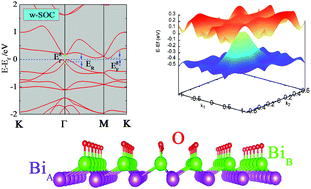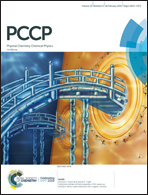Topologically nontrivial phase and tunable Rashba effect in half-oxidized bismuthene
Abstract
Bismuth based (Bi-based) materials exhibit promising potential for the study of two-dimensional (2D) topological insulators or quantum spin Hall (QSH) insulators due to their intrinsic strong spin–orbit coupling (SOC). Herein, we theoretically propose a new inversion-asymmetry topological phase with tunable Rashba effect in a 2D bismuthene monolayer, which is driven by the sublattices half-oxidation (SHO). The nontrivial topology is identified by the SHO induced p–p band inversion at the Γ point, the Z2 topological number, and the metallic edge states. Interestingly, the SOC opens a band gap as large as 0.26 eV at Γ, which is twice as large as that of the freestanding bismuthene monolayer, revealing a predominant contribution of the orbital filtering effect. Inversion-symmetry breaking leads to a substantial Rashba constant of 11.5 eV Å near the valence band top, which is about twice as large as that of the freestanding bismuthene monolayer due to the SHO effect. In particular, the topological insulator-to-topological semimetal phase-transition and the tunable Rashba effect were achieved by exerting a moderate strain. We demonstrate that 3% stretching is the most desirable strain to obtain superior properties. Hexagonal boron nitrogen (h-BN) is proposed to serve as a suitable substrate for SHO-Bi in practical applications. Our findings not only provide a new route to engineering a 2D inversion-asymmetry topological insulator but also represent a significant advance in the exploration of 2D Bi-based topological materials.

- This article is part of the themed collection: 2019 PCCP HOT Articles


 Please wait while we load your content...
Please wait while we load your content...